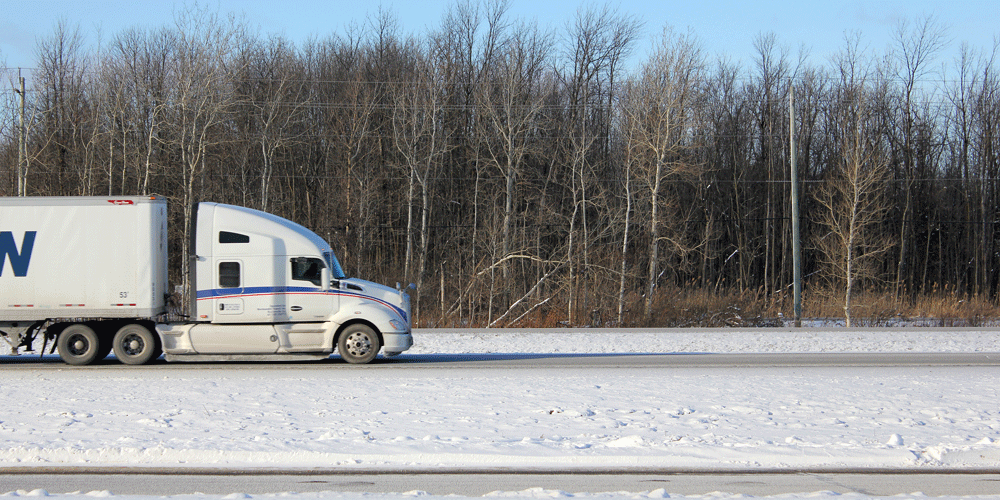Joanna Jungels began her career with ATS in 2005 as a fleet manager. Soon after, she was promoted to oversee and enhance a growing OS/OW permitting team which created a system to retain and output rules and requirements for both state and local entities. Today, Joanna regularly attends state transportation meetings and currently serves as chair of the Permit Policy Committee at the Specialized Carriers & Rigging Association, where she advocates for, and promotes the importance of, creating useful resources to better understand and increase awareness around the complexities of oversized freight. In her role at ATS, Joanna enjoys working with others to brainstorm, solve problems, and learn new things while continually striving to improve the processes and resources available to ATS' customers.
The snow is melting and spring is coming — what a glorious time of year!
With the annoying winter driving conditions a thing of the past (at least until next year, that is), driving will get a whole lot easier. No need to worry about slipping and sliding and taking all the extra cold weather precautions. It’s smooth sailing from here on out, right? Right?
Well, not quite.
As we transition into spring, frost laws (or seasonal weight restrictions) come into play — which means, depending on the size of your equipment and freight, you may not be able to move in certain states for a while.
The spring thaw will have an impact on your shipments if you’re traveling in Canada and the northernmost United States that border Canada like Montana, North Dakota, Minnesota, Wisconsin, and Michigan.
As a trusted transportation provider, Anderson Trucking Service (ATS) navigates seasonal weight restrictions with our drivers year after year. We’re here to help you understand what frost laws are, why they’re in place, and how you can safely navigate them season after season.
By the end of this article, you'll be well-prepared to tackle the spring thaw.
Let's dive into the world of frost laws, starting with the fundamentals:
- Understanding frost laws
- When do seasonal weight restrictions begin?
- States with frost laws
- Consequences of not following frost laws
- Tips for navigating frost laws
Understanding Frost Laws
Frost laws are seasonal restrictions placed on certain roads to prevent damage during periods of thaw and freeze. These restrictions vary by region and typically limit the weight and speed of vehicles to protect the road infrastructure.
But let’s back it up a bit. As we approach spring, we experience a “spring thaw.”
As we northerners bundle up our coats for the extreme temperatures throughout winter, the roadbeds begin to freeze and contract. Then as spring nears and the temperatures rise above freezing, the asphalt expands.
As a result, melting ice seeps into the roadway’s foundations. When temperatures inevitably drop overnight, once again the asphalt contracts.
This back and forth — contracting and expanding, thawing and freezing — puts the roadways in a fragile place.
Ever wondered why so many potholes pop up in the spring? This is why. During the spring thaw, the roads are much more susceptible to cracks and breakage.
Now imagine extremely heavy freight — both legal and oversized loads — passing over those fragile roadways. It’s a recipe for disaster. Heavy trucks, when traversing these already weakened roadways, can cause significant — not to mention expensive — damage.
That’s why frost laws (also referred to as frost restrictions, thaw restrictions, or seasonal weight restrictions) are put in place in certain areas during the spring thaw. By keeping these heavy trucks off the roads (or limiting their speeds), road agencies prevent some of this excessive damage.
Frost Laws Start and End Dates
The duration of seasonal weight restrictions varies year by year depending on how the season plays out.
Typically, however, spring thaw lasts from February to May. In some parts of Canada, the spring thaw can last well into June. As a result, some seasonal weight restrictions last weeks and some last months.
States Affected by Frost Laws
The states bordering Canada and all of Canada are affected by spring weight restrictions. The complete list includes the 16 following states:
- Idaho
- Iowa
- Maine
- Michigan
- Minnesota
- Montana
- Nevada
- New Hampshire
- New York
- North Dakota
- Pennsylvania
- South Dakota
- Vermont
- Washington
- Wisconsin
- Wyoming
In particular, the states that face the biggest impact are Michigan, Minnesota, and North Dakota because they have cold winters. You may see more stringent regulations in these areas, with especially fragile roads having the most restrictions.
Northern states with milder winters will still have seasonal weight restrictions in place but they may not last as long; the same goes for a mild winter.
States, provinces, and local jurisdictions set their spring weight limits based on local climate and road types; there are no federal guidelines in place. For example, “all-season” roads aren’t subject to seasonal weight restrictions because they’re designed to be driven year-round.
If you’re traveling across the northeast during the spring thaw, you’ll need to keep a close eye on changing restrictions state by state and road by road.

Frost Law Violations
Failure to comply with season weight restrictions results in a few possible consequences.
For starters, not only might you damage the roadways, but you could also damage your truck, trailer, and cargo — especially if the roads are already pretty beat up.
If you’re caught failing to comply with restrictions, you might pay costly fines. Until you can either redistribute the weight across the axles or have weight removed from your load, you may be forced to stop.
No driver wants to earn Compliance, Safety, and Accountability (CSA) points for their company, but getting caught disobeying seasonal weight restrictions and speed limits can result in violations for failure to obey and speeding.
Navigating Seasonal Weight Restrictions: 4 Tips
Because restrictions aren’t specific across states (and sometimes they change within the state), it can be confusing to know what you’re supposed to do as a truck driver.
You’re probably wondering if and how your load will be affected. A good rule of thumb is this: If you plan to move freight in the north from February through May, chances are your load will be affected one way or another. Weight restrictions take axle weight and gross weight into consideration, so even legal loads (as low as 40,000 pounds) might have a problem moving.
Equipped with the following knowledge, you can confidently navigate frost laws and ensure smooth travels throughout the year.
Tip #1: Talk to Your Driver Manager
As soon as you’re dispatched on a load, your first call should be to your driver manager. They’ll talk through any restrictions you may be facing depending on the size of the load and where it’s going. Together, you can come up with a route that gets you and your freight safely to its destination.
Tip #2: Plan Your Routes
Now isn’t the time to hop in the truck and start driving without a plan in place. You need to consider exactly how the load is getting from point A to point B. The first mile and last mile might be short, but they’re often the biggest obstacles because they can be on local back roads.
Before you start driving, check government websites to monitor seasonal weight and speed restrictions. Determine how your route may or may not be affected and reroute accordingly.
Tip #3: Expect to Drive Extra Miles
If your load is taking you across northern states, expect to drive extra miles to avoid roadways with weight restrictions. For example, you may need to take a southernmost route to avoid certain roadways that may be closed.
Tip #4: Redistribute the Weight
Distributing weight across the axles may help remedy the situation. Again, refer to government websites for weight restrictions to determine if redistributing the weight across axles will allow you to transverse certain roadways.
Stay Safe All Season Long
You certainly can’t control seasonal weight and speed restrictions, but there are things you can do to work around them.
While frost laws may add a layer of complexity to your journey, they ultimately serve to protect the infrastructure and enhance safety for all road users. Remember the following:
- Check government websites for weight restrictions before planning your route.
- Be prepared for weight restrictions, which may require adjusting your cargo load.
- Monitor road conditions and be vigilant for signs indicating weight restrictions and reduced speed zones.
By staying informed and adapting to these seasonal regulations, you demonstrate professionalism and commitment to safe driving practices. Embrace the challenge, stay vigilant, and keep on truckin' with confidence!
Keep these safety tips in mind as you haul load after load.


